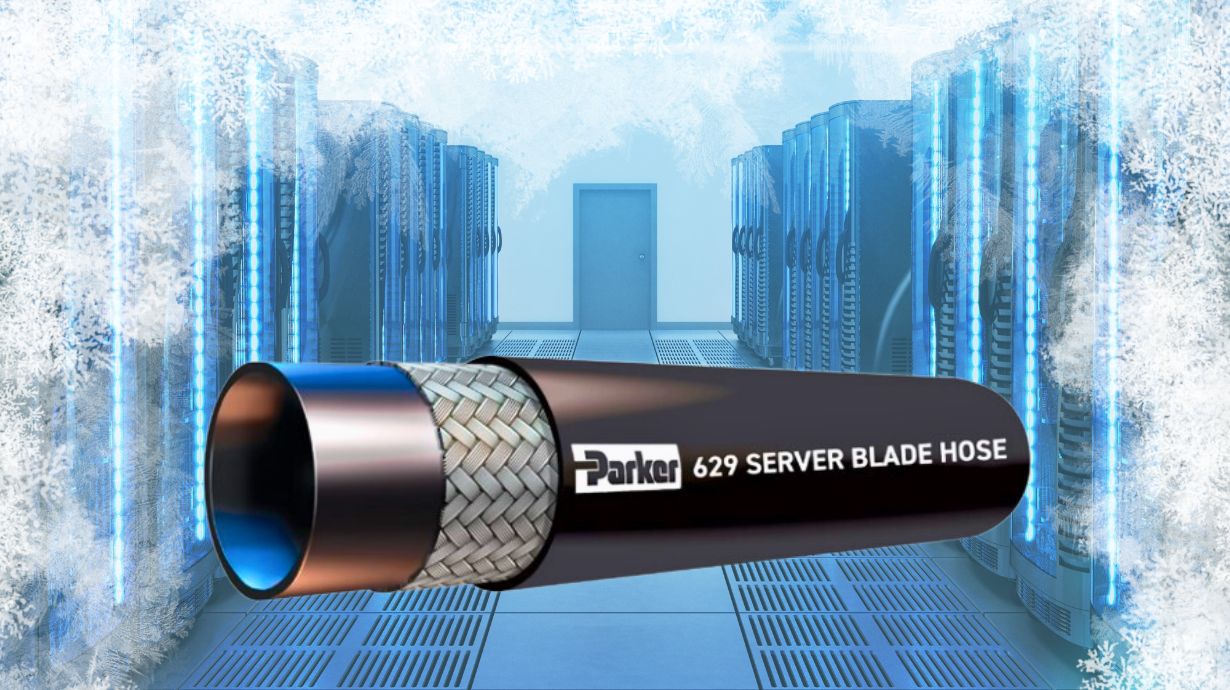Data Center Cooling: Understanding Coolant Chemistry and Hose Selection

Keeping data centers cool is a critical challenge. The efficiency of your cooling system depends on the components you choose, and the hoses that carry coolant are a key consideration. At Triad Technologies, we understand the importance of proper hose selection and are here to help you find the ideal solution for your specific application.
Most liquid cooling systems use either hoses or flexible tubing to carry coolant and regulate temperature. While the terms may be used interchangeably by the layman, it's important to know the differences between hoses and flexible tubing and their applications. Tubing is a simple, single-material construction built for containing and transporting coolant. It is typically specified by inner diameter (ID) and wall thickness. Hoses, on the other hand, are engineered with multiple layers:
Tube: The innermost layer, responsible for containing the coolant.
Reinforcement: Provides pressure resistance, typically a braided or spiral material.
Cover: The outer layer, protecting the reinforcement from abrasion and environmental factors.
Hoses are specified by inside diameter (ID) and outside diameter (OD). For the best results, most data center cooling systems will utilize low-pressure rubber hoses with fiber reinforcement, though it is important to consult with an expert to determine the best solution for your exact needs.
Chemical Compatibility
The most crucial aspect of hose selection is ensuring chemical compatibility between your hose's inner tube material and your coolant. Parker offers several hose options with an inner tube made of synthetic elastomeric polymers. This material is made of chains of different polymers as well as fillers like carbon black, which influence the material's properties and polarity. To minimize degradation of your hose, it's best to choose a polymer with a polarity opposite that of your coolant. For example, non-polar polymers like butyl and EPDM (ethylene propylene diene terpolymer) are excellent choices for moving polar fluids, such as water. Data center coolants often consist of water mixed with glycols (ethylene or propylene). Propylene glycol/water mixtures tend to be more polar than ethylene glycol/water mixes, but the exact ratio is important to consider when it comes to chemical compatibility.
Understanding Your Coolant
Data center cooling systems often use a blend of propylene glycol and deionized water as coolant. However, other coolants are available, each with specific properties optimized for heat transfer or freeze/evaporation protection. Coolant mixtures may also contain additives like biocides and corrosion inhibitors. As mentioned, it's crucial to confirm the compatibility of all components in the coolant mixture with the hose's inner tube. Proprietary additives can make predicting compatibility difficult, so physical testing of the tube material with the specific coolant is the best approach. Contact Triad Technologies and we can work with Parker to help perform this testing and help qualify a hose for your application.
Parker Hoses for Data Center Cooling
Parker's 627, 629, and 807 series hoses, available through Triad Technologies, are specifically designed for data center liquid cooling applications. These EPDM hoses are peroxide-cured to minimize coolant permeation and particulate fouling, ensuring long-term reliability.
627 Series: Designed for general thermal cooling applications.
629 Series: Optimized for server blade cooling.
807 Series: Features Push-Lok connections for easy installation.
Visit Parker’s Thermal Management Bulletin for additional information about these hose series, as well as other thermal management solutions from Parker Hannifin.
Choosing the right hose for your data center is crucial for the performance and longevity for your system. Contact Triad Technologies today to let our team of experts help you select the ideal Parker hose for your cooling needs. We can also assist with compatibility testing and provide valuable technical support. Let us help you keep a cool head when it comes to your data center.